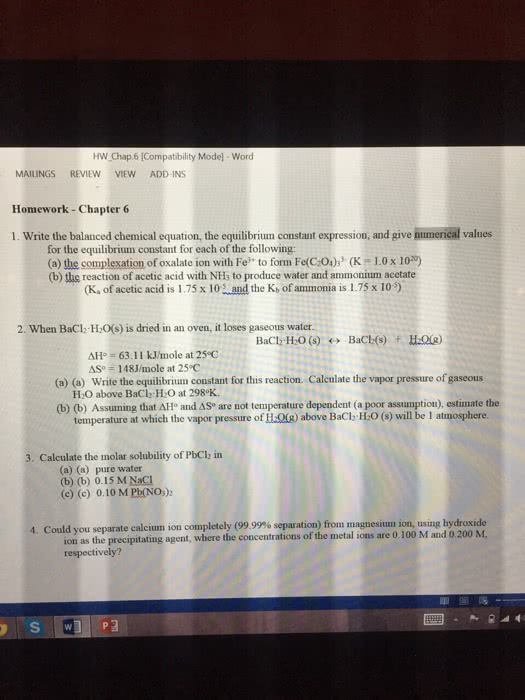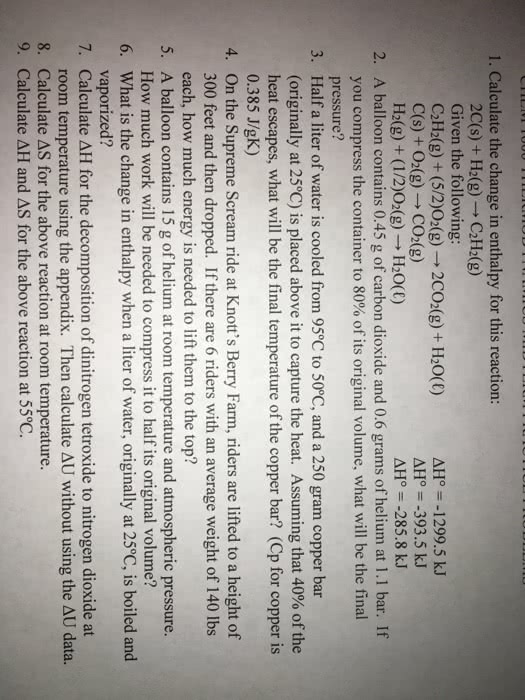1
answer
0
watching
449
views
25 Mar 2020
The crystalline hydrate Cd(NO3)2 · 4 H2O(s) loses water when placed in a large, closed, dry vessel at room temperature:
Cd(NO3)2 · 4 H2O(s)  Cd(NO3)2(s) + 4 H2O(g)
Cd(NO3)2(s) + 4 H2O(g)
This process is spontaneous and ∆H° is positive at room temperature. (a) What is the sign of ∆S° at room temperature? (b) If the hydrated compound is placed in a large, closed vessel that already contains a large amount of water vapor, does ∆S° change for this reaction at room temperature?
The crystalline hydrate Cd(NO3)2 · 4 H2O(s) loses water when placed in a large, closed, dry vessel at room temperature:
Cd(NO3)2 · 4 H2O(s) Cd(NO3)2(s) + 4 H2O(g)
This process is spontaneous and ∆H° is positive at room temperature. (a) What is the sign of ∆S° at room temperature? (b) If the hydrated compound is placed in a large, closed vessel that already contains a large amount of water vapor, does ∆S° change for this reaction at room temperature?
1
answer
0
watching
449
views
For unlimited access to Homework Help, a Homework+ subscription is required.
Nestor RutherfordLv2
26 May 2020
Related textbook solutions
Basic Chemistry
5 Edition,
Timberlake
ISBN: 9780134138046
Principles of Chemistry Molecular Approach
4th Edition,
Tro
ISBN: 9780134112831
Principles of Chemistry Molecular Approach
3rd Edition, 2014
Tro
ISBN: 9780321971944
Chemistry: Structure and Properties
2nd Edition,
Tro
ISBN: 9780134293936
Chemistry: A Molecular Approach
3rd Edition,
Tro
ISBN: 9780321809247
Chemistry: A Molecular Approach
5th Edition,
Tro
ISBN: 9780134874371
Principles of Chemistry: A Molecular Approach
4th Edition,
Tro
ISBN: 9780134895741
Chemistry: The Central Science
14th Edition, 2017
Brown
ISBN: 9780134414232


